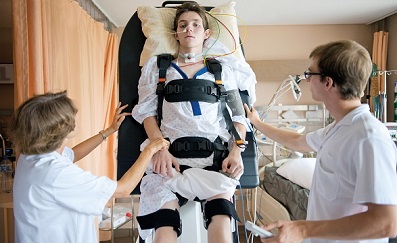Patients at rehabilitation hospitals spending up to 72% of their time idle
Hocoma
Hocoma have released a new industry insight PDF, where it is estimated that patients at rehabilitation hospitals spend up to 72% of their time not receiving treatment.
Often these patients desperately need more rehabilitation time to overcome spinal cord or stroke injuries but are limited by their one-on-one sessions with a therapist.
New advances in rehabilitation technology like robot-assisted rehab can assist therapists in many ways. These include administering functional movement therapy and providing an engaged, feedback-driven rehabilitation experience that promotes motor learning. This technology also achieves state-of-the-art patient outcomes and maximises valuable therapist time.
How can a rehabilitation facility benefit from robot-assisted rehab?
- By bridging the gap between patient needs and therapy resources
- By providing intensive care for neurological patients
- By observing the value of robot-assisted rehab in attaining higher quality repetitions and movement intensities
- By giving precision feedback for medical professionals and patients alike
- By demonstrating vast patient improvements in motor learning
- By extending the potential for therapists to treat multiple patients at once without reducing the quality of exercises
- By achieving long-term savings
State-of-the-art therapeutic tools like robot-assisted rehab can springboard rehabilitation facilities to the forefront of the industry. The Hocoma Total Solution offers advanced technology for your clinic across the entire continuum of rehabilitation, read more.

